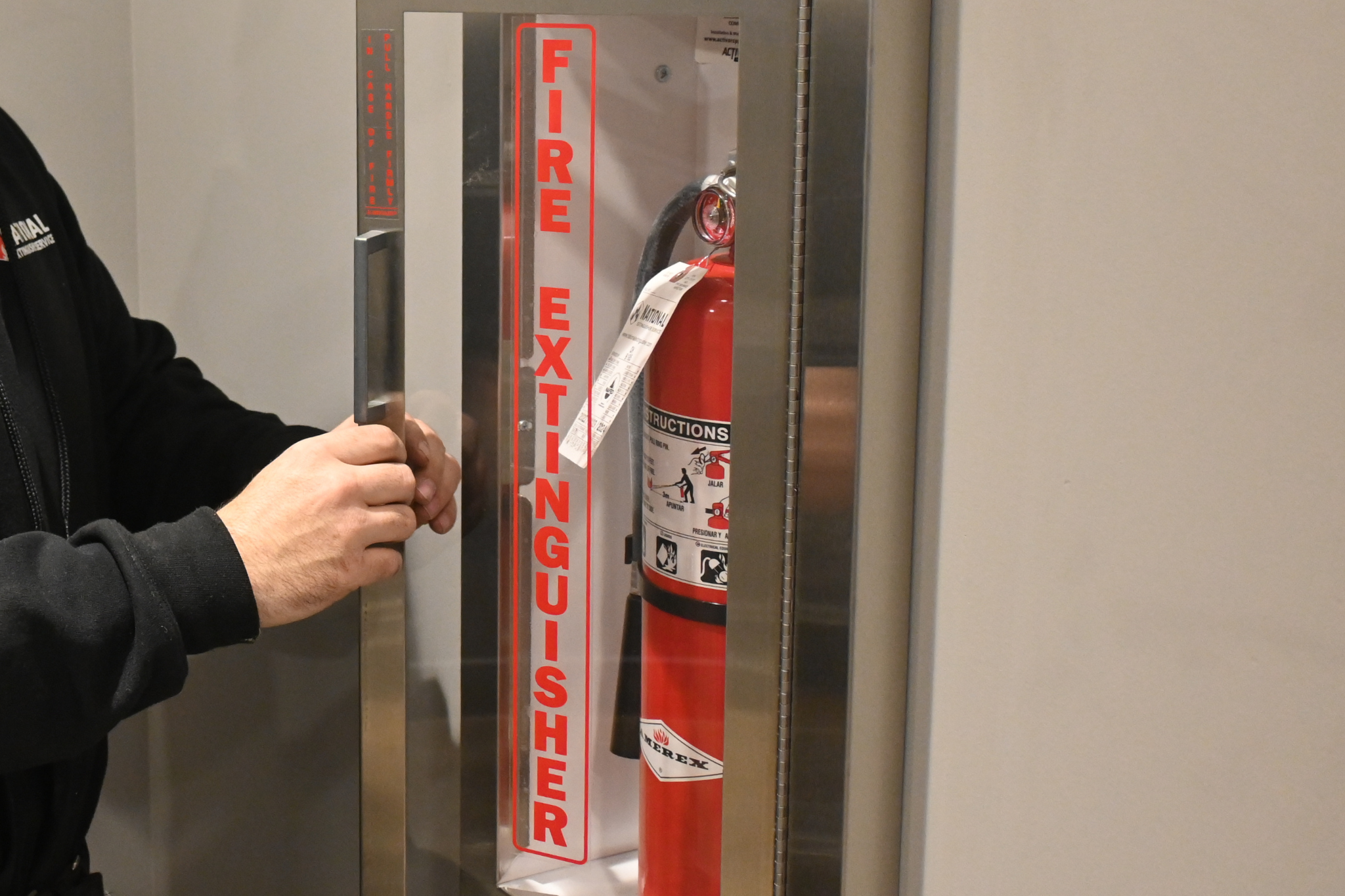Fire Extinguisher Placement: What You Need to Know
Fire extinguishers are often the first line of defense, stopping small fires before they turn into major disasters. But having the right equipment isn’t enough — it’s just as important to ensure that extinguishers are placed in the correct locations. Proper placement helps keep your employees and customers safe and can save lives during an emergency.
At National Extinguisher Service, we don’t just provide the equipment to keep your business safe. We also offer ongoing expertise and support to ensure your fire safety plan remains effective. From initial placement advice to regular inspections and maintenance, we’re committed to being your trusted partner every step of the way.
WHY PROPER FIRE EXTINGUISHER PLACEMENT MATTERS
Does your team know exactly where the fire extinguishers are located in your business? Proper placement is crucial so that in an emergency, your team can act quickly and confidently. When every second matters, no one should have to waste time searching.
Visibility isn’t the only consideration. Placement should also reflect the specific fire risks in your workplace. Different areas may require different types of extinguishers with different mounting requirements.
KEY FACTORS FOR FIRE EXTINGUISHER PLACEMENT
When placing fire extinguishers in your business there are many factors to consider, including:
Accessibility, Visibility, and Proximity to Fire Hazards: Fire extinguishers must be placed where they are easily accessible and clearly visible to anyone in the building. This means positioning them close to areas with higher fire risk, while also following maximum travel distance requirements—the furthest distance someone should have to go to reach an extinguisher. In most cases, the distance should not exceed 75 feet, though certain extinguishers require even shorter distances. To make sure extinguishers are easy to spot, signs marking their location must be placed where they can be seen from a distance. Proper placement not only improves safety but also ensures your business remains in compliance with fire codes and standards.
Avoiding Obstacles and Ensuring Easy Access: Fire extinguishers must be placed where they are always easily accessible, free from any obstacles or barriers. Clutter, furniture, equipment, or storage blocking access can delay response times during an emergency and put people at greater risk. Clear pathways to extinguishers help ensure that employees and customers can reach them quickly and safely. Regularly checking that extinguishers are visible and not obstructed is an important part of maintaining an effective fire safety plan.
Height and Mounting Requirements: Fire extinguishers must be mounted on the wall at a specified height off the floor to ensure they are easily accessible and visible. The exact mounting height can vary depending on the type and size of the extinguisher. For example, larger, heavier extinguishers often have a lower mounting height to allow for safe and easy removal, while smaller extinguishers may be mounted slightly higher. Generally, the top of an extinguisher weighing less than 40 pounds should be no more than 5 feet above the floor, while extinguishers over 40 pounds should be mounted no higher than 3.5 feet. Proper mounting also prevents extinguishers from being blocked or hidden, helping ensure quick access in an emergency.
Consideration for Different Workplaces (Office, Industrial, Kitchen, etc.): Every workplace has unique fire risks and challenges that impact where extinguishers should go and what types are needed. Things like electrical equipment, flammable materials, kitchens, or heavy machinery all determine the proper types and placement. Taking the time to assess your space helps ensure that extinguishers are placed where they’ll be most effective in an emergency.
COMMON MISTAKES IN FIRE EXTINGUISHER PLACEMENT
Fire extinguishers are often placed incorrectly. Some common mistakes include:
Blocked Access: Placing extinguishers behind objects, equipment, or inside cabinets makes them hard to reach during an emergency.
Poor Visibility: Extinguishers that aren’t clearly marked or visible from a distance can delay response times.
Wrong Locations: Installing extinguishers too far from potential fire hazards or not within the required distance reduces their effectiveness.
Incorrect Height: Mounting extinguishers too high or too low can make them difficult to grab quickly.
One-Size-Fits-All Approach: Using the same type of extinguisher throughout a building, regardless of the specific risks in different areas.
HOW NES CAN HELP
NES certified technicians are here to help your business stay safe, compliant, and prepared for an emergency. We provide more than just equipment. Our team brings trusted expertise through routine fire extinguisher inspections, suppression system services, placement guidance, and ongoing support.
PARTNER IN PROTECTION
National Extinguisher Service is your trusted partner in protection, dedicated to ensuring that both your team and fire suppression equipment are always prepared. From providing top-quality equipment and services to offering hands-on extinguisher training and more, our team works with you to find the best solutions for your business needs. We deliver expertise, reliability, and support that helps keep your business safe and compliant.


